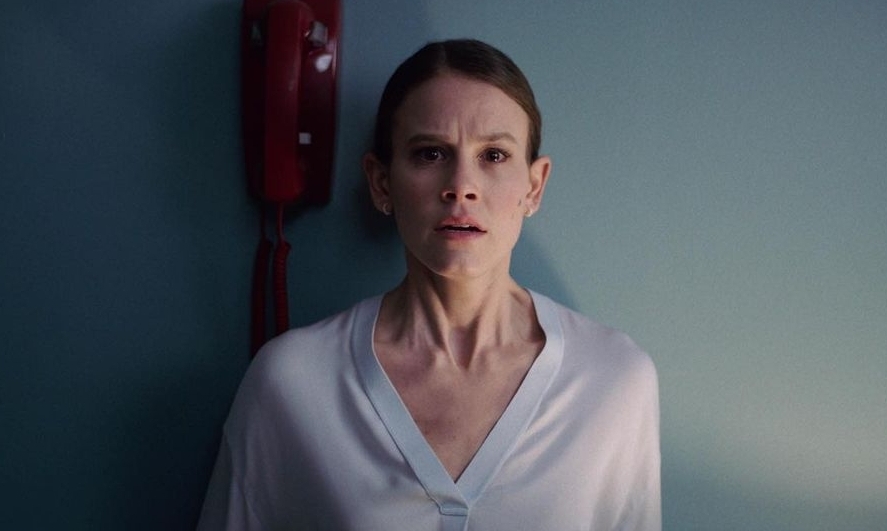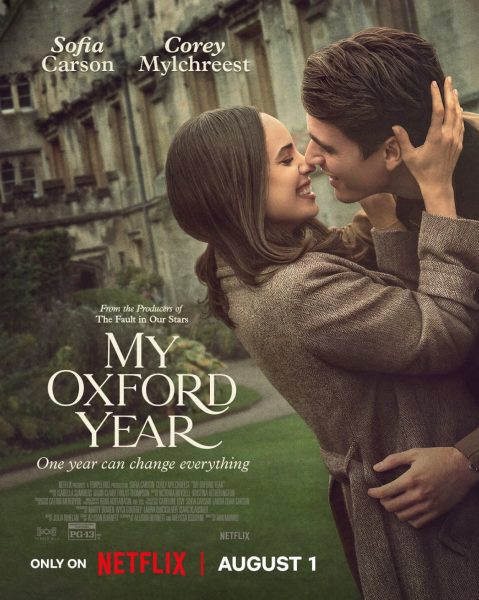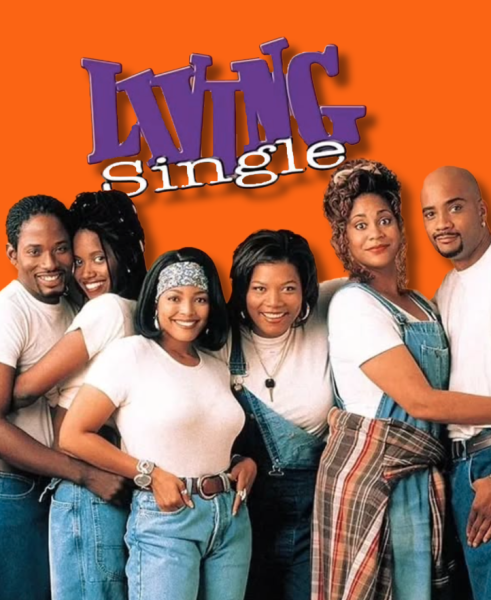All Smiles for Parker Finn’s Horror Debut
New horror director Parker Finn masterfully makes one of the friendliest human instincts into something insidious: smiling. The premise of “Smile” may sound familiar to horror fanatics: A paranormal entity wreaks havoc on the main character’s life and ultimately, possesses them to do terrible things. Gathering this basic plotline from the movie’s preview, I assumed this latest horror flick would solely rely on jump scare tactics for audience appeal. While it has its fair share of gruesome scenes and frightening jumpscares, it also has substance and a message worth sharing.
Finn opens his movie with a traumatic memory from Rose Cotter’s (Sosie Bacon) childhood. In this disturbing glimpse of the past, a young girl peers into her parents’ cluttered bedroom and finds her mother slumped over the bed, glossy eyed and salivating, with her face next to several orange bottles. She has overdosed. The film fast forwards to a grown-up Rose, now a clinical psychologist, appearing much happier and put-together. A diligent worker, Rose practices in a mental hospital with floral patterned walls, friendly colleagues and a schedule chock-full of appointments. As optimistic as this sounds, Finn wastes no time in introducing the audience to the action. During one of her appointments, Rose encounters a disheveled and panicked girl who reveals that has been seeing hallucinations of this “thing that wears people’s faces like masks” that ultimately smiles before doing something bad. When Rose inquires if she sees this vision in the room with them, the girl begins to scream frantically and thrash around like something is attacking her. Rose runs to call for help, but when she returns to the room, the girl is standing in the corner of the room, head down, eyes up and smiling.
“Smile” is Finn’s first full-length franchise following the 2020 release of his short film “Laura Hasn’t Slept.” This ten-minute short was Finn’s first dip into the horror genre and due to high audience ratings and positive critical reception, he decided to turn ten minutes into two hours. I am pleased to say that with “Smile,” Finn certainly hit the mark. Several elements lead me to say this. Finn is an expert at creating audience discomfort. Whether it is the low bass that vibrates through the theater and causes the audience to tremble in their seats, or the camera angles that make it seem like Rose is never alone, I was impressed by how constantly uneasy I felt. Light and dark are also captured excellently. In any scene where it is just Rose and the viewer, there is a part of the frame that is either dimly lit or completely hidden, letting our imaginations run wild. Is the black figure in the background just the refrigerator or is it something else? Therein lies the question, why do these people never turn on any lights? There are also two moments when the camera slowly pans upside down as Rose drives along a rural road. I had not seen this visual technique done before, and I loved the eerie effect it had on the big screen.
To give a better glimpse at Finn’s directing, I want to describe a scene that has since appeared in my nightmares. Following an appointment with her therapist, Rose finds herself alone in her house overwhelmed, paranoid and terrified by her own mind. It is completely silent as she stands with her back to the camera. Suddenly, the shrill house alarm is set off, which surprisingly, is a very effective jump scare. As our ears are being assaulted by the blaring alarm, the viewer follows a trembling Rose as she inches her way towards the front door with a knife, only to find nothing when she turns the corner. After managing to turn off the alarm with a shaky finger, the phone rings, causing viewers to jump once again. When Rose answers, she is greeted by her security company who asks if everything is alright. A shaken-up Rose responds affirmatively. The caller then strangely inquires, “are you alone?” Rose questionably answers that she is. After a few long seconds, the voice menacingly replies, “are you sure?” Those words still unsettle me, meaning it was a job well done. I can tell that Finn has taken inspiration from the “Scream” and “Insidious” series’ and managed to make his scene truly horrifying.
On a more serious note, while it may not seem like it from the surface, “Smile” conveys a message about trauma and the stigma surrounding mental health. The opening scene where Rose discovers her dead mother is undoubtedly traumatic. It is clear that even decades later, Rose avoids her emotions through her work and has still not allowed herself to process the pain that came with watching her mother’s suicide. Without spoiling the plot, the monster targets Rose partially because her mind is vulnerable. Unsurprisingly, when Rose falls victim to the monster’s antics, she appears hysterical to outside witnesses who are unable to see it. As her “hallucinations” become more intense, she goes from being a high-functioning clinical psychologist to being treated like a crazy person. I think there is something to be said in this series of events about how we treat people with mental illness or unresolved trauma. Their battles are invisible, and if we don’t try to understand them, they can be easily labeled as “crazy” as we put ourselves in a position of mental superiority. Often, like in Rose’s case, they are not crazy, but just need someone to listen. Herein lies the question of whether the monster in “Smile” is real or just in Rose’s head. In my opinion, the film puts it best: It does not matter if it is real because “the mind makes it real.” Though buried deep in dialogue, I think that was a fantastic line to include.
Ultimately, “Smile” may not be the most inventive or original horror film, but it is creative, appallingly scary and a hit for Parker Finn. Critics have compared it to “The Ring” and “Insidious,” and I want to add “The Babadook” to that list, as the deeper themes in both movies are very similar. For any horror film lover who is not bothered by gore or jumpscares galore, this film will make you smile.













































































































































































































